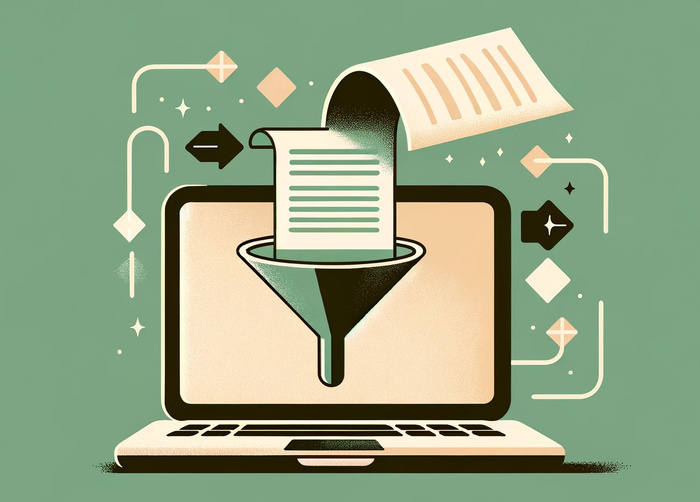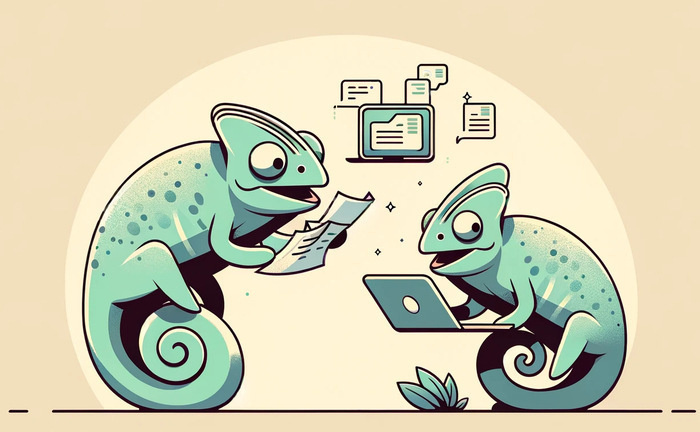
Today, content reuse has become one of the basic principles of content generation. It is actually the practice of repurposing existing content to generate new text or code. Instead of starting from scratch, your team will be able to take advantage of the entire knowledge base of your company. The material for reuse can be anything: blog posts, articles, videos, existing manuals, and guides, as well as all other documents referring to your digital product. All of this can be modified and reformatted to serve a different purpose or reach a new audience. With ClickHelp’s easy-to-use tool, we’re constantly striving to make this process even simpler, a commitment that has earned us acknowledgment from G2 for our ease of use.
Content Reuse and Recycling Information
We live in a world where there is hardly anything original. Information is no exception; it can be recycled, much like a glass bottle or a carton pack. Similar to recycling physical products, recycling information aims to minimize waste and make the most of available resources.
This doesn’t mean that recycled information is less valuable. In fact, it may gain new value and bring more profit to the company’s budget. The main thing is that recycling information optimizes the process of content creation, making it less costly.
As a result, we get new (recycled) information that can be ‘sold’ at the same price as the original information and produced at a lower cost. This provides a significant marketing advantage, isn’t it?
Recycling information is the process of repurposing existing information to create new information units.
There are various ways to recycle information:
- Collecting. Selecting and compiling information from different sources to generate a new information unit on a specific topic.
- Summarizing. Condensing information into shorter formats such as summaries, abstracts, press releases, press kits, or briefs.
- Reformatting. Adapting information from one format to another. For example, transforming an article into an infographic or video presentation. This is usually done to meet the needs of a new audience. Another name for this method is targeting or retargeting content.
- Quoting. This is the most ancient means of ‘direct’ information recycling. After being used in the original, some fragments of text can be reused to support a new idea. Citing information has always been used as a means of ‘upgrading’ new content, providing credibility, and making it more reliable and attractive.
- Remixing. Taking elements from different sources and combining them to create something new or original. This involves blending ideas, concepts, or data to generate fresh insights or perspectives.
Recycling information is beneficial in several ways. It helps efficiently use the existing knowledge, makes the creation of new content more effective in terms of cost and effort (no need to create info from scratch), promotes collaboration, and helps deliver important information to a wider range of target audiences.
5 Ways to Reuse Content via Documentation Management Tools
The modern documentation management tools allow users to reuse content in many ways, offering a whole spectrum of features to simplify this process. Below are just some of them.
- Version Control and Revisions. This feature significantly improves the life of your company. Documentation management tools will help track version/revision history, providing you and your colleagues with the most relevant text or helping you find previous versions to reuse existing content or its components in new documents.
- Modular Documentation. Documentation management tools are based on component authoring, considering the entire knowledge base of the company as fragments or units that can be used as building blocks or modules for new content. These tools facilitate the creation of modular documents by reusing text or code fragments across multiple documents, ensuring efficient repurposing of valuable content.
- Templates and Snippets. These are valuable when you need to standardize documentation according to specific requirements, such as your company’s branding policy or customer requirements. Templates and snippets can be embedded in your documents to facilitate the reuse of standard structures, sections, or content formats.
- Metadata Tagging is related to the concept of single sourcing and the information search process. Tags help create a taxonomy of texts or notions, classify and categorize content, making it easier to search for and repurpose relevant material in new documents.
- Centralized Repository. All modern documentation management tools provide storage for your documentation. When opening a portal on a system, you will have a centralized repository for all your content. This makes it easily accessible for reuse and, in addition, saves your company budget as you won’t need to buy a server or server space to store all your information.

7 Common Pitfalls in Content Reuse
When reusing content, it is crucial to sidestep plagiarism, ensure the information is both current and accurate, target the content to your audience, maintain a consistent tone and style, consider legal aspects, and always strive to rewrite the reused content. The latter requirement ensures that new value is added to the reused content.
Based on the above, your focus when reusing content should be on avoiding the following common mistakes:
- Plagiarism. Avoid copying someone else’s content without proper attribution. Plagiarism not only damages your reputation as a technical writer or copywriter but also violates copyright laws. Most customers expect content to be 90-100% original, so being caught red-handed could result in blacklisting.
- Outdated information. Ensure the information is accurate and up-to-date. Outdated information can mislead your audience and undermine the credibility of your product. Take the time to fact-check and update content before reuse.
- Lack of customization. Tailor your content to suit your audience. Merely copying and pasting content without adapting it to the needs of your audience can lead to disengagement. Your audience may choose a more relevant product.
- Inconsistency in tone or style. Consider the appropriate tone and style, especially when reusing content for different audiences. While using technical jargon may be acceptable for IT readers, a more formal tone might be necessary when dealing with top-level managers. Incorrect messaging can confuse your audience and drive them away.
- Ignoring legal considerations. Be aware of legal restrictions or required permissions. For videos or music, ensure you have the necessary rights or licenses to reuse the content.
- Failing to add value. Rewriting content is the essence of content reuse. Simply rearranging old content is insufficient. Use paraphrasing tools to explore various wording options and add value by providing additional insights, perspectives, or updated information. This enhances the content’s value to your target audience.
- Neglecting the SEO parameters. Pay attention to SEO parameters, especially when reusing content for websites. SEO parameters, including keywords, crosslinking, readability, and meta tags, influence how your text is indexed by search engines. Incorporating these elements improves the visibility and engagement of your content for the target audience.
By avoiding these mistakes and dedicating time to properly rework and customize your reused content, you can create content that is valuable, relevant, and engaging for your audience while upholding ethical standards in content creation.

Conclusion
Summing up, reusing content is not merely duplicating previously created content. Various considerations must be kept in mind. Quality and consistency are of primary importance, ensuring alignment with the company’s policy and the needs of your target audience. However, other indispensable aspects must be considered. Legal issues, such as quoting somebody else’s text or using videos, should be taken into account, along with considerations for your reputation as an author (as plagiarism can lead to being blacklisted) and adherence to SEO parameters.
Good luck with your technical writing!
ClickHelp Team
Author, host and deliver documentation across platforms and devices
 Elmirain Technical Writing on 2/7/2024 — 5 minute read
Elmirain Technical Writing on 2/7/2024 — 5 minute read Elmirain Technical Writing on 2/7/2024 — 5 minute read
Elmirain Technical Writing on 2/7/2024 — 5 minute read

